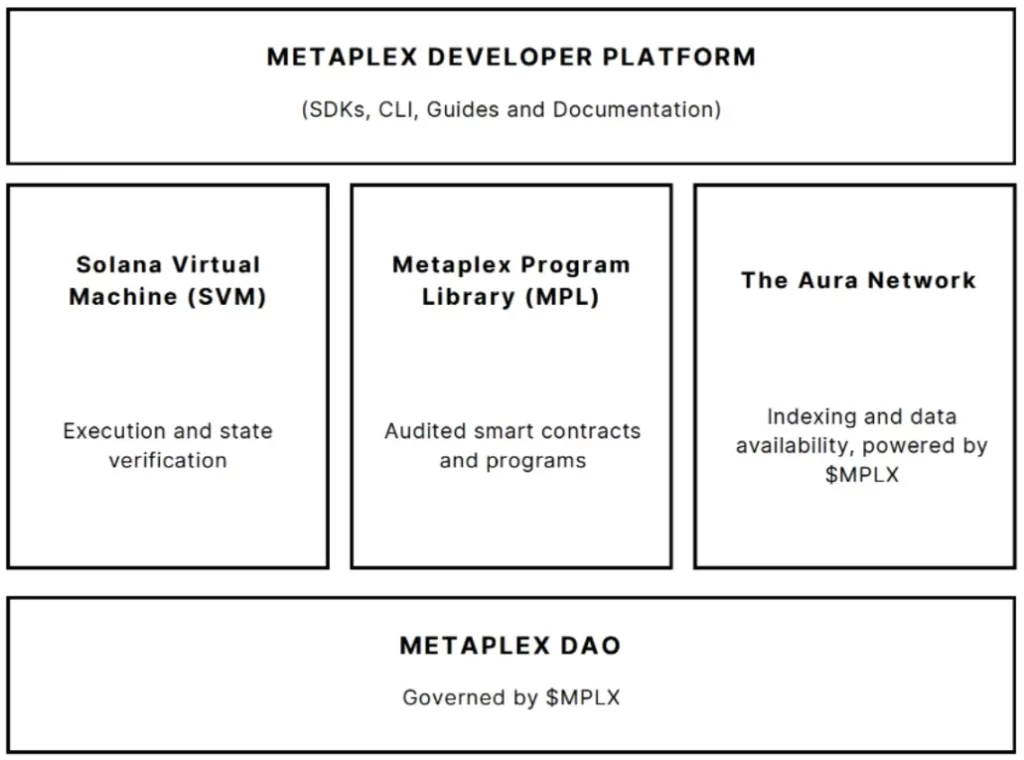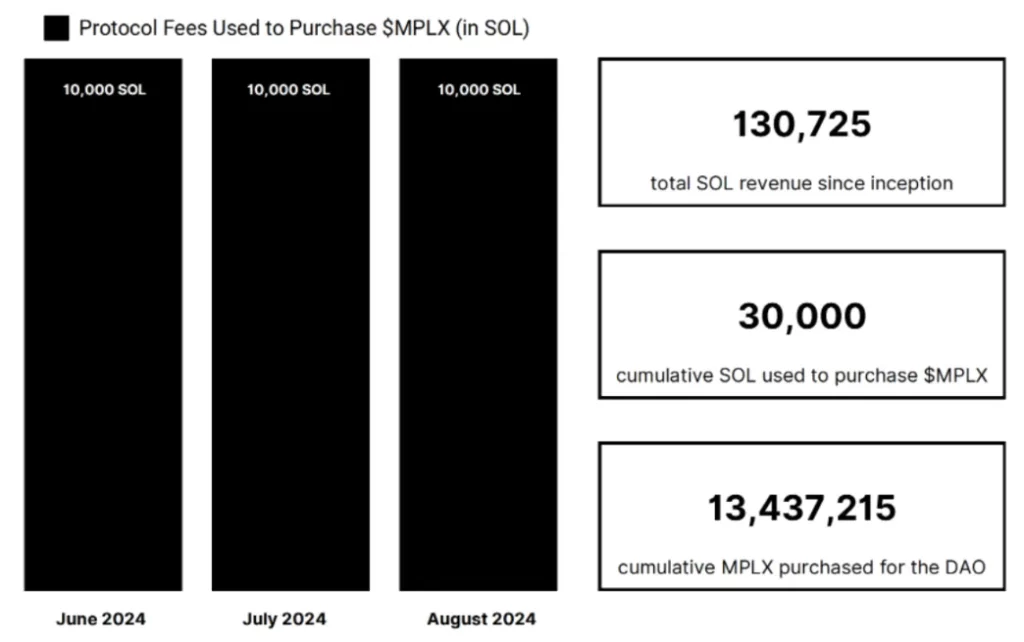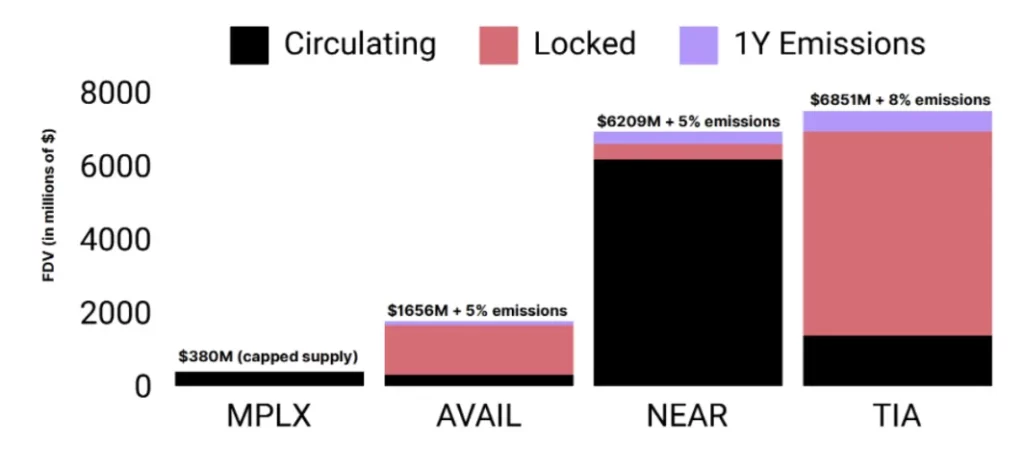Metaplex: A Decentralized Infrastructure Platform on Solana

Metaplex Protocol is a decentralized platform built on the Solana blockchain, providing developers with the tools and standards necessary to create decentralized applications (dApps). It streamlines the processes of creating, selling, and managing digital assets.
Supporting a wide range of digital assets, including NFTs, fungible assets (FA), real-world assets (RWA), gaming assets, and decentralized physical infrastructure (DePIN) assets, Metaplex has successfully minted over 550 million assets across 55 million unique addresses, making it one of the most widely used blockchain protocols and developer platforms today.
Structure of Metaplex Protocol

Solana Virtual Machine (SVM)
Metaplex is built on the Solana Virtual Machine (SVM), which provides a secure and decentralized environment for writing and deploying smart contracts. This allows developers to create and manage their applications efficiently.
Metaplex Developer Platform
The Metaplex developer platform offers a comprehensive suite of tools, including SDKs, command-line interfaces (CLI), guides, and tutorials. These resources provide a robust framework for deploying contracts on SVM, enabling developers to create applications with ease.
Metaplex Contract Library
Developers can access a library of pre-audited contracts through Metaplex, which allows them to use vetted code directly, reducing both time and development costs.
Bubblegum
Bubblegum is a program designed for creating and interacting with compressed NFTs (cNFTs) on Solana. It significantly reduces the cost of storing NFTs on the blockchain, which is especially beneficial for use cases like gaming that involve thousands of NFTs. For instance, without cNFTs, storing one billion NFTs would cost around 12 million SOL. With Bubblegum, this cost can be reduced to just 500 SOL.
Core
Core is a cost-effective NFT standard on Solana that provides lower minting costs, reduced computational requirements (allowing more transactions per block), and enforceable royalties, making it advantageous for developers compared to other NFT standards.
MPL-Hybrid
MPL-Hybrid (MPL-404) enables the interchangeability of NFTs and fungible tokens (FTs). This system gained popularity with the launch of the $DEGOD token by DeGods, allowing users to exchange DeGods NFTs for a specified amount of $DEGOD tokens.
Inscription
The Metaplex inscription program allows developers to write data directly to Solana, utilizing the blockchain for data storage. This is similar to engraving serial numbers on the Bitcoin blockchain, enabling small digital art pieces to have their metadata inscribed directly on Solana for an additional fee.
Token Validation Rules
The token validation rules define a set of criteria for the creation and updating of SPL tokens. Any token transactions that violate these rules will be invalidated.
Token Metadata
Token metadata is a standard for NFTs on Solana that allows developers to create digital assets by adding metadata to tokens. This standard is widely used for most profile picture (PFP) NFT collections on Solana.
Fusion
Fusion allows builders to create composable NFTs, enabling users to combine multiple NFT fragments into a single item in a game or to blend several digital art pieces into a new artwork.
Hydra
Hydra facilitates the creation of shared wallets, providing a direct funding pathway for large-scale events through a central wallet allocation.
Candy Machine
This is a program used for minting and distributing NFTs on Solana.
Summary of the Metaplex Contract Library
Metaplex plays a crucial role in developing the majority of developer tools on Solana. By utilizing Metaplex’s tools, projects and developers can save significant time and costs compared to starting from scratch. Most tools charge a nominal fee, with 50% of Metaplex’s revenue allocated for the repurchase of $MPLX tokens.
Aura Network
Recently, Metaplex introduced Aura Network, a data availability layer for Solana. This new layer not only creates fresh value propositions for $MPLX tokens but also enhances Solana’s scalability by addressing the speed of blockchain data reading and display.
Decentralized applications often struggle with high costs and low speeds, making it challenging to compete with centralized applications. Aura complements SVM and MPL data availability through a node-based decentralized network, providing efficient indexing of asset data and real-time data availability guarantees for compressed states. $MPLX is now the incentive token for running Aura nodes and serves as the gas token for Aura Network.
Metaplex DAO
The Metaplex DAO is responsible for the governance of the Metaplex Protocol and manages the MPLX treasury, which supports Metaplex’s development.
Holders of $MPLX can participate in the governance of the Metaplex community by submitting Metaplex Improvement Proposals (MIPs), grant proposals, and voting.
$MPLX Token
50% of Metaplex’s revenue is dedicated to acquiring $MPLX for the Metaplex DAO treasury.

With the launch of Aura Network, $MPLX can also be compared with other data availability solution tokens.

Sistine Research: Is $MPLX Undervalued?
Sistine Research believes that the $MPLX token may be undervalued by a factor of 3 to 10 due to several reasons:
- Structural Supply Limitations: The limited supply of $MPLX, even with Aura Network nodes earning $MPLX rewards, is subsidized by a closed-loop system (Metaplex revenues) rather than by token issuance.
- Demand Side Flow: Demand for $MPLX is driven by buybacks funded by Metaplex revenues, which are priced in SOL. Thus, $MPLX functions as a high-beta asset on SOL, attracting significant demand.
- Valuation Compared to Similar DA Solutions: The current trading price of $MPLX is significantly lower than the fully diluted valuations (FDV) of comparable data availability solutions. While Solana is actively seeking market share, Metaplex’s focus on Solana without integration into other major networks could explain its lower valuation.
- Core Revenue Model Expansion: As the tool library expands, Metaplex’s core revenue model (tokenizing Solana network tools) is likely to continue growing.
- Limited Trading Options: Currently, $MPLX is only tradable on exchanges like Bybit, Gate, and Kucoin, with no perpetual contracts available. Listing on more major exchanges and opening up contracts could signal bullish sentiment.